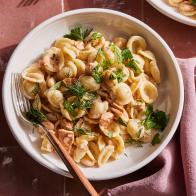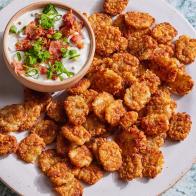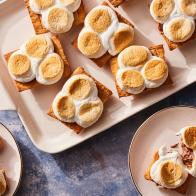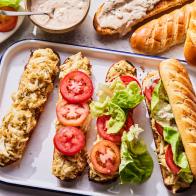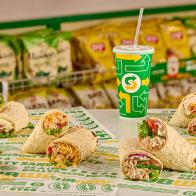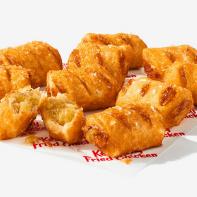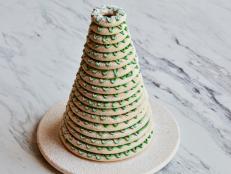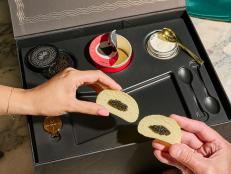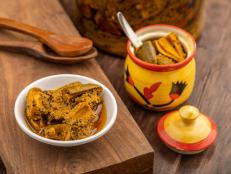3 of a Kind: How Ube Is Bringing Sweet Flavor and Color to the Dessert Table

3 of a Kind checks out three places across the country to try something cool, new and delicious.
With its striking color, a unique flavor and a texture that works in cookies, cakes and other confections, ube — a purple yam native to the Philippines — was destined to become the next dessert sensation. While lavender-hued sweets have recently caught the eye of Instagrammers, the ingredient is more than just a buzzy trend for Filipino chefs.
“In any Filipino party, ube would be present at the dessert table alongside leche flan and fruit salad,” says Ginger Lim-Dimapasok, owner of Cafe 86 in Pasadena, Calif. “To those of us who moved to the U.S. from the Philippines, being able to eat ube and to have it be so easily accessible really brings us back to our roots.”
As Filipino cuisine rises in popularity, more ube-centric eats are popping up on menus, sometimes in unexpected forms. “It’s inspirational to see how other chefs transform this ingredient very differently from how we’ve always known to eat it growing up,” says Nomad Donuts’ Kristianna Zabala. Here’s how three chefs are currently shining a spotlight on ube.
2nd City, New York City
At this narrow, mural-covered eatery, Chef Joseph Andino pays homage to his Filipino heritage with tacos, buns and other savory bites. The sole sweet offering is a housemade ube macapuno (coconut) ice cream. Andino’s frozen dessert is a nod to halo-halo, a popular Filipino treat composed of shaved ice that’s colorfully adorned with beans, sweet corn, coconut jelly and ube ice cream.
“With ube, you can expect a savory flavor presented in the form of dessert. It has similar flavor and texture to yams, butternut squash and even taro,” explains Andino. The addition of coconut balances out ube’s natural earthiness, resulting in a luscious frozen treat that’s easy to eat by the pintful.
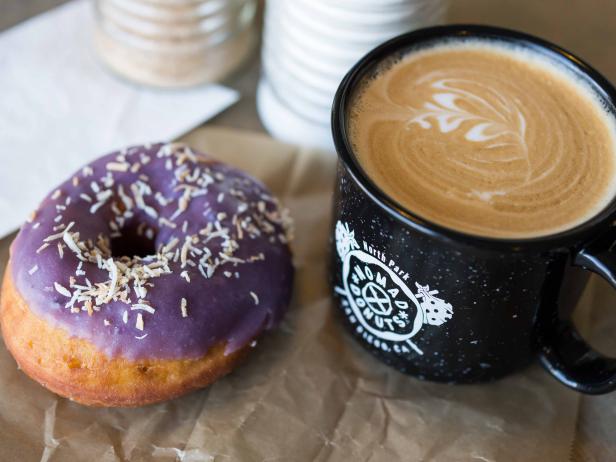
Nomad Donuts, San Diego
When creating the eclectic menu of rotating flavors that draws customers back to this doughnut shop again and again, Zabala looked to the diverse backgrounds of Nomad’s owners, including her own. “I wanted to use ube for a couple [of] reasons and one was to introduce it to people who may never find themselves at a Filipino bakery and therefore have a slim chance [of] coming across ube,” she says.
Zabala roasts the yam until it’s soft and purees it into a glaze. The lilac-colored icing of her ube-taro-coconut yeast doughnut may be the first thing to catch a customer’s attention, but it’s the distinctive yam flavor, combined with a sprinkling of toasted coconut, that’s made it a beloved favorite.
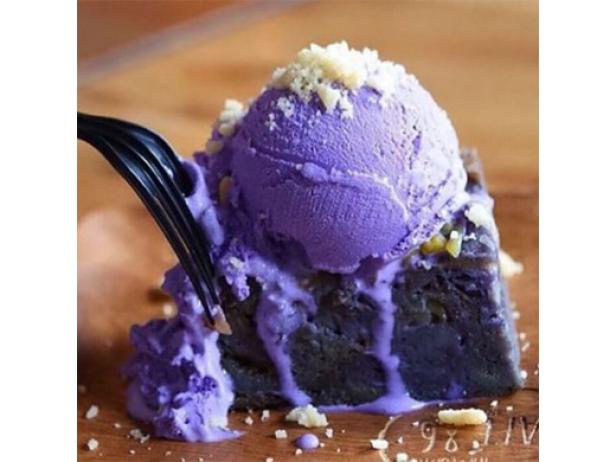
Cafe 86, Pasadena
What started as a recipe concocted on the fly has turned into the most sought-after item at this cozy cafe. Hint: It’s bread pudding with an unexpected twist.
“I was getting a little tired of just the ube flavor in the rich pudding, so I decided to dump your traditional halo-halo ingredients into the mix, such as bananas, jackfruit and macapuno,” says Lim-Dimapasok.
Her kitchen experiment is now the shop’s best-selling item, halo-halo bread pudding, which is offered alongside an extensive list of ube-infused desserts (cupcakes, madeleines, babka) created by Pastry Chef Yaz Arenas-Carnero. “We want everyone who has never tried ube to be able to experience it in different and nonintimidating ways,” Lim-Dimapasok explains.
Photos courtesy of 2nd City, Jim Sullivan and @hangrydiary
Related Links:

